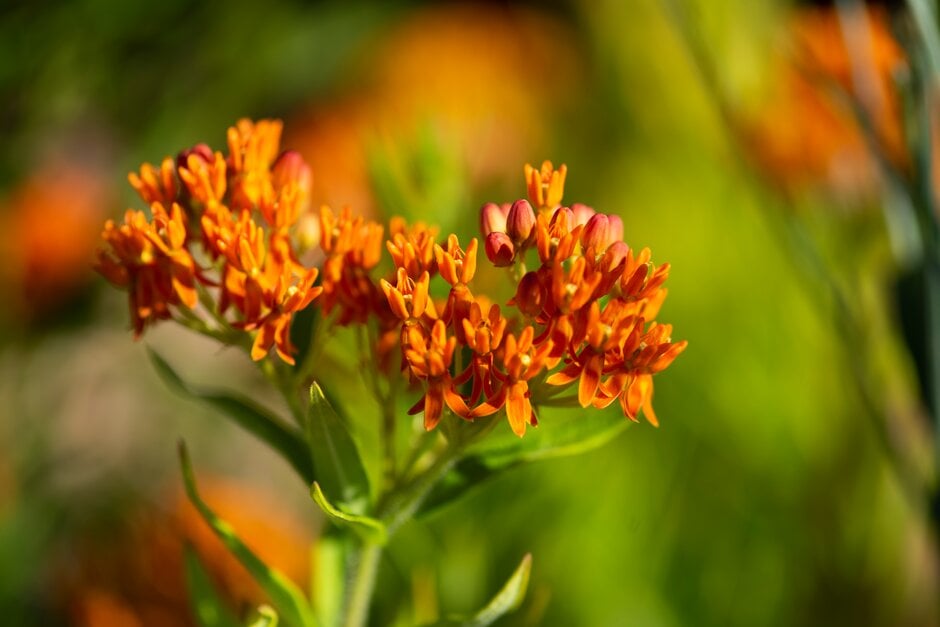Asclepias tuberosa Gay Butterflies Group
butterfly weed Gay Butterflies Group
A herbaceous perennial with upright stems of narrow green leaves. Clusters of showy, waxy yellow, golden orange, pink or red flowers are produced from mid to late summer. An excellent food source for butterflies

Buy this plant
Size
Ultimate height
0.5–1 metresTime to ultimate height
2–5 yearsUltimate spread
0.1–0.5 metresGrowing conditions
Moisture
Well–drainedpH
Acid, Alkaline, NeutralColour & scent
| Stem | Flower | Foliage | Fruit | |
| Spring | Green | |||
|---|---|---|---|---|
| Summer | Yellow Orange Red Pink | Green | ||
| Autumn | Yellow Orange Red Pink | Green | ||
| Winter |
Position
- Full sun
Aspect
South–facing or West–facing or East–facing
Exposure
Sheltered Hardiness
H4Botanical details
- Family
- Apocynaceae
- Native to GB / Ireland
- No
- Foliage
- Deciduous
- Habit
- Bushy
- Potentially harmful
- Harmful if eaten. Wear gloves and other protective equipment when handling
- Genus
Asclepias can be evergreen or deciduous perennials or subshrubs, with simple, entire leaves and umbel-like clusters of small, distinctively shaped flowers followed by paired fruits containing seeds embedded in silky fibres
- Name status
Unresolved
How to grow
Cultivation
Grow outdoors in well-drained soil in full sun
Propagation
Propagate by softwood cuttings or seed in spring, or semi-ripe cuttings in late summer/autumn
Suggested planting locations and garden types
- City and courtyard gardens
- Gravel garden
- Sub-tropical
- Conservatory and greenhouse
- Cut flowers
- Flower borders and beds
- Wall side borders
Pruning
Cut back old growth in early winter or spring
Pests
Generally pest-free
Diseases
Generally disease-free
Love gardening
Sign up to receive regular gardening tips, inspiration, offers and more
View our Privacy Policy
Get involved
The Royal Horticultural Society is the UK’s leading gardening charity. We aim to enrich everyone’s life through plants, and make the UK a greener and more beautiful place.